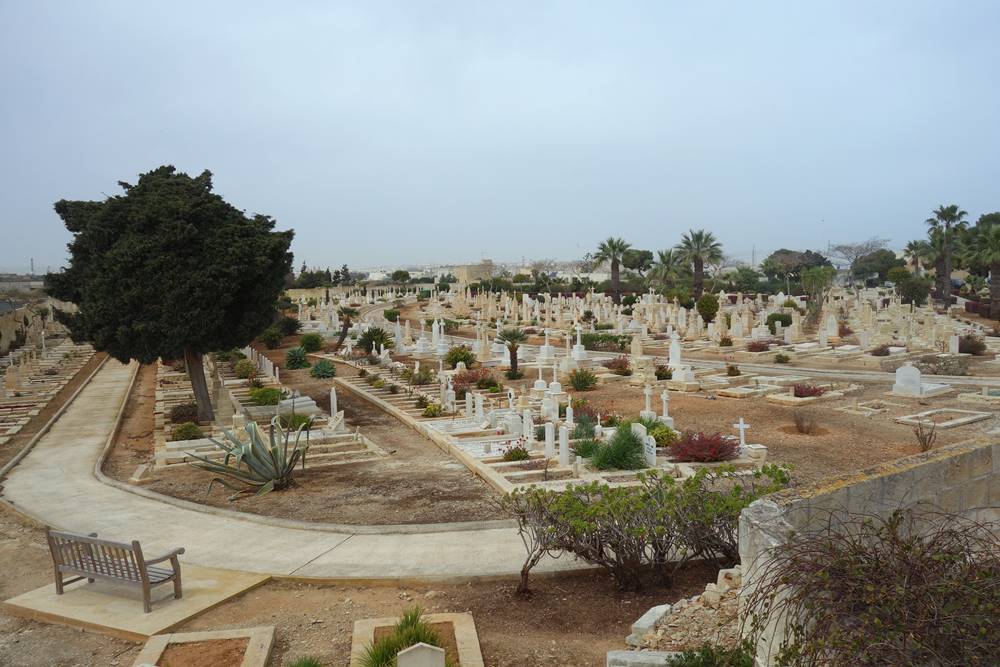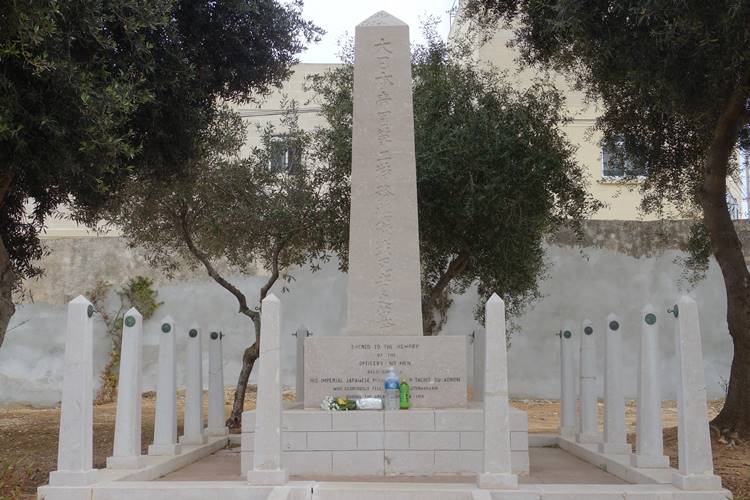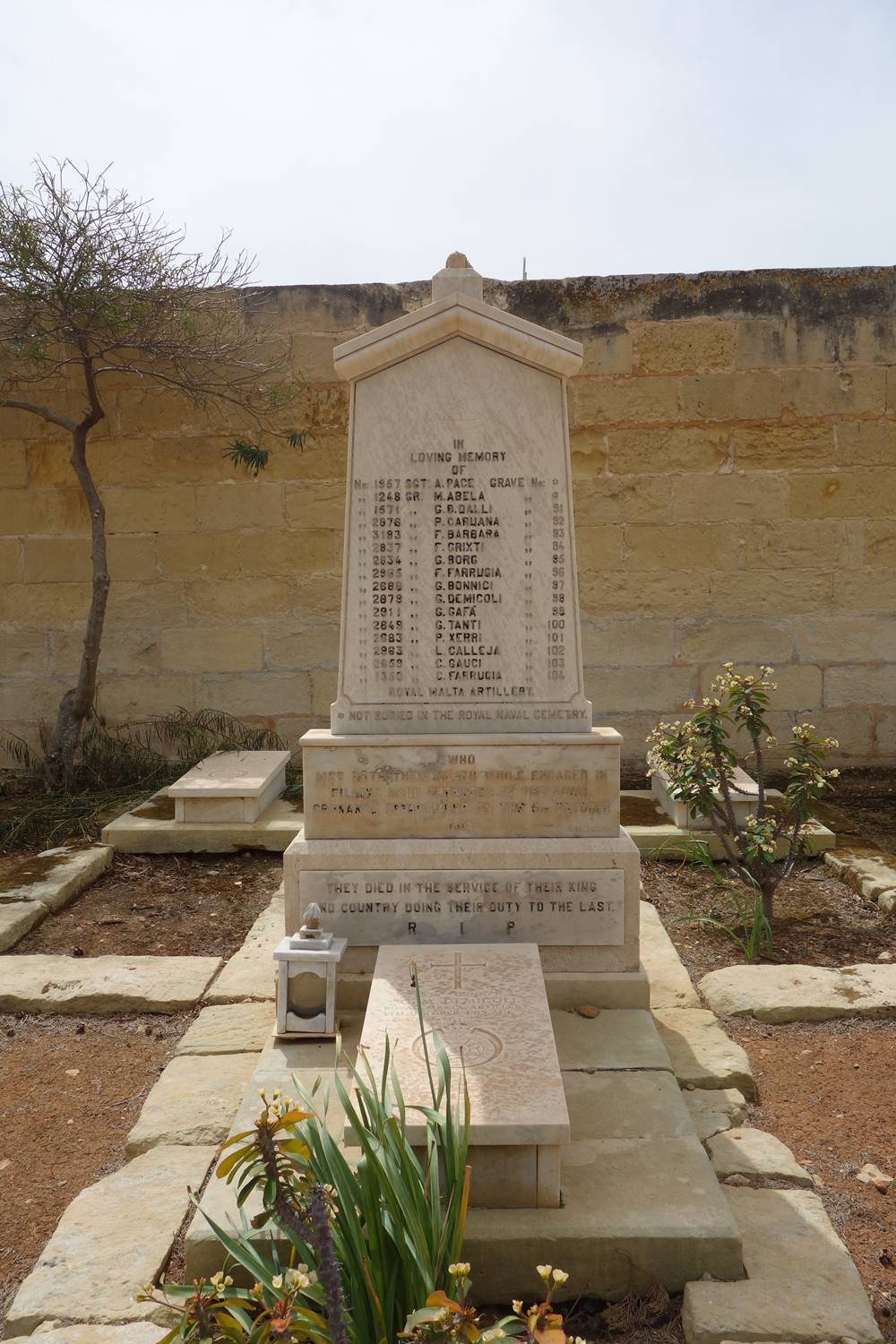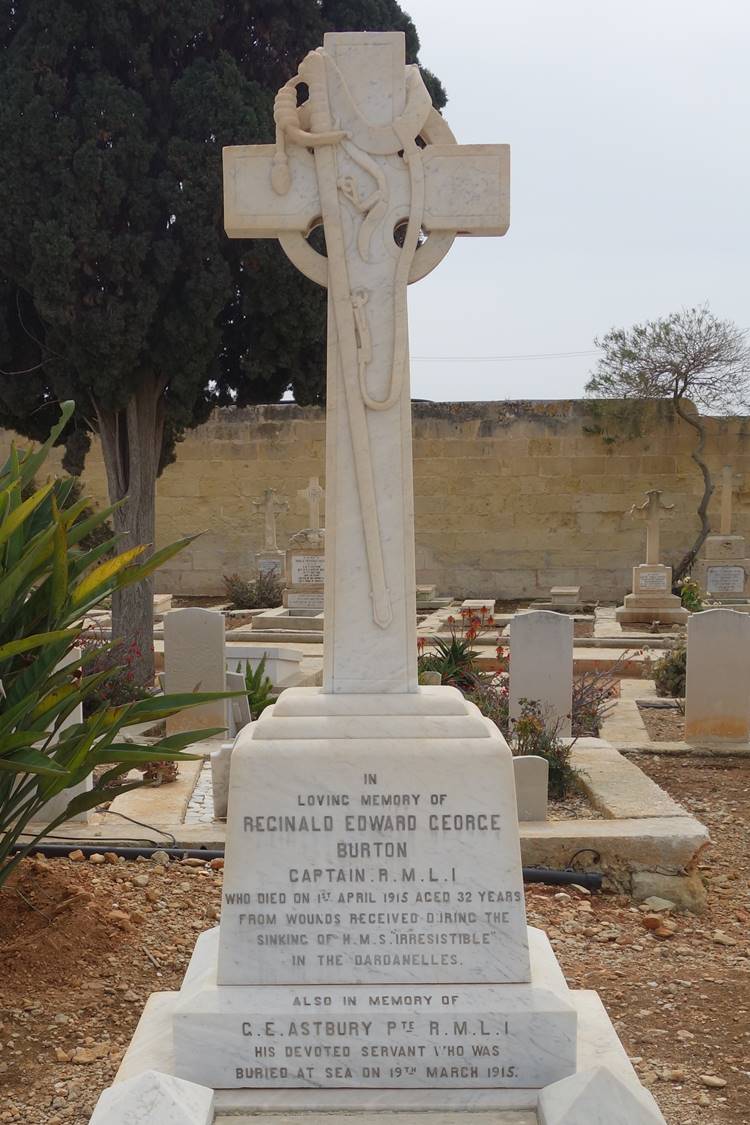This article looks at the Malta (Capuccini) Naval Cemetery and is one of a series on the Commonwealth War Graves Commission’s cemeteries on the island:
The Malta (Capuccini) Naval Cemetery

Private William Thomas Lacery, Royal Marine Light Infantry who was serving on H.M.S. Hussar is the earliest First World War burial, having died on 6 August 1914. In the early months of the war, there was a small stream of burials but these increased a lot from June 1915 onwards in consequence of the fighting at Gallipoli. Many soldiers and sailors who were invalided from Gallipoli due to wounds or illness were evacuated back to Malta, where they died. A lot of the soldiers were buried in the Pieta Military Cemetery rather than in the Naval Cemetery. Once the Gallipoli Campaign came to an end in January 1916, those buried in the cemetery were nearly all naval personnel. One of the later burials was for Chief Petty Officer Harry Ernest Wild of H.M.S. Biarritz, who died of typhoid on 10 March 1918. Wild took part in Shackleton’s Imperial Trans-Antarctic Expedition 1914-1917 and was awarded a posthumous Albert Medal.
The first casualty buried in the cemetery from the Second World War was Captain Charles Ernest Hotham who died on 31 January 1940 aged 48. Captain Hotham was serving with H.M.S. St Angelo, at Fort St Angelo, a shore establishment. A lot of the Royal Air Forces casualties from the Siege of Malta are buried in the cemetery, especially those suffered by 69, 148 and 261 Squadrons. Only five soldiers of the British Army were buried in the cemetery during the Second World War, one of whom was Allen Algernon Bathurst, Lord Apsley who was killed in a plane crash on 17 December 1942. Lord Aspley served with the Royal Gloucestershire Hussars during the First World War and had been awarded the Military Cross and Distinguished Service Order. He was a member of parliament at the time of his death.
One of the graves in the cemetery is for Captain Reginald Burton of the Royal Marines Light Infantry who died of wounds ”received during the sinking of HMS Irresistible in the Dardanelles”. H.M.S. Irresistible hit a mine on 18 March 1915 while taking part in an Anglo-French attack on Turkish positions in the Dardanelles. Left without power, the ship drifted into the range of the Turkish artillery, came under heavy fire and sank. The majority of the ship’s complement of 780 men were rescued, but 150 of the crew became casualties. The grave also remembers Burton’s servant, Private George Edward Astbury who was buried at sea the day after the sinking and is commemorated on the Portsmouth Naval Memorial.



